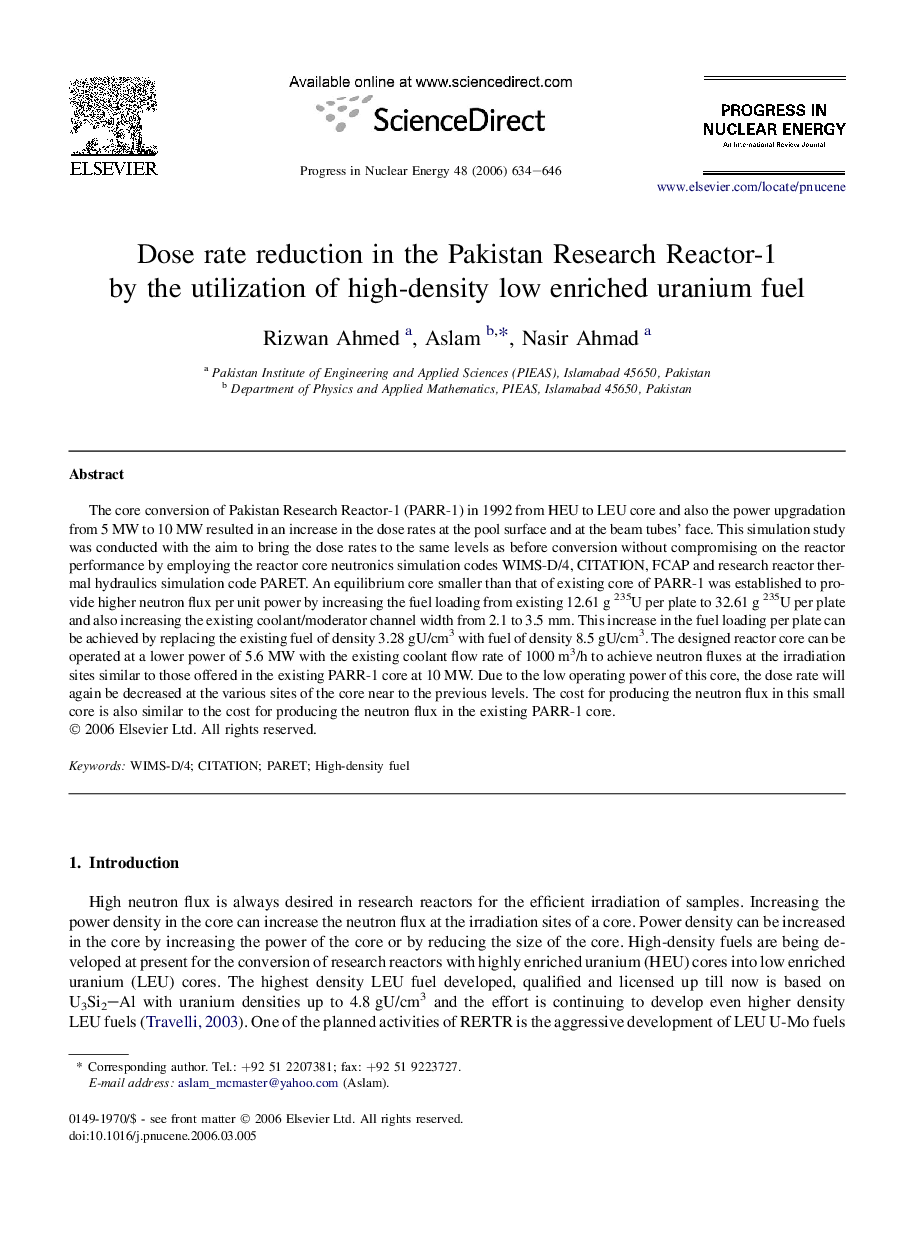| Article ID | Journal | Published Year | Pages | File Type |
|---|---|---|---|---|
| 1741489 | Progress in Nuclear Energy | 2006 | 13 Pages |
The core conversion of Pakistan Research Reactor-1 (PARR-1) in 1992 from HEU to LEU core and also the power upgradation from 5 MW to 10 MW resulted in an increase in the dose rates at the pool surface and at the beam tubes' face. This simulation study was conducted with the aim to bring the dose rates to the same levels as before conversion without compromising on the reactor performance by employing the reactor core neutronics simulation codes WIMS-D/4, CITATION, FCAP and research reactor thermal hydraulics simulation code PARET. An equilibrium core smaller than that of existing core of PARR-1 was established to provide higher neutron flux per unit power by increasing the fuel loading from existing 12.61 g 235U per plate to 32.61 g 235U per plate and also increasing the existing coolant/moderator channel width from 2.1 to 3.5 mm. This increase in the fuel loading per plate can be achieved by replacing the existing fuel of density 3.28 gU/cm3 with fuel of density 8.5 gU/cm3. The designed reactor core can be operated at a lower power of 5.6 MW with the existing coolant flow rate of 1000 m3/h to achieve neutron fluxes at the irradiation sites similar to those offered in the existing PARR-1 core at 10 MW. Due to the low operating power of this core, the dose rate will again be decreased at the various sites of the core near to the previous levels. The cost for producing the neutron flux in this small core is also similar to the cost for producing the neutron flux in the existing PARR-1 core.
